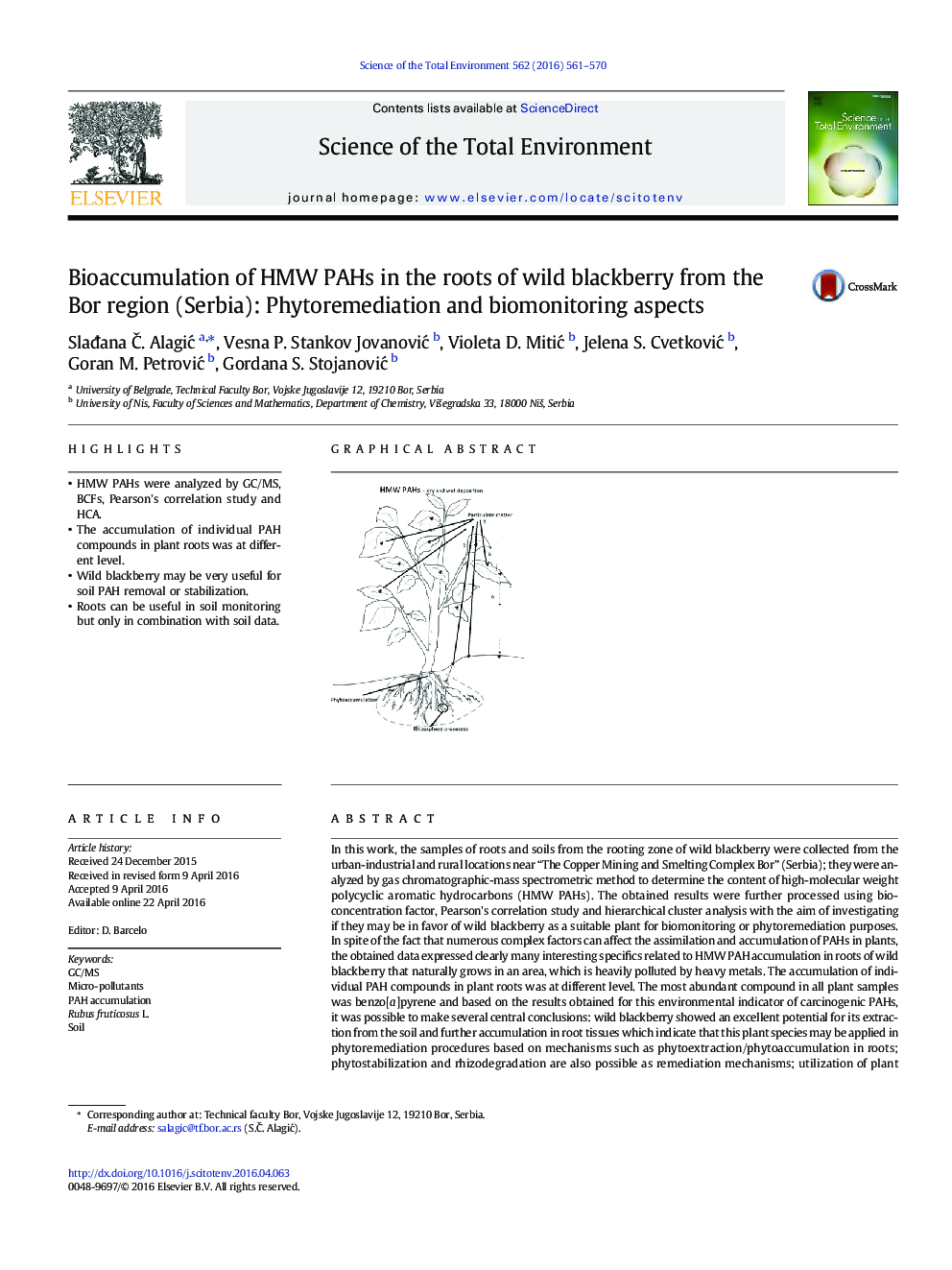| Article ID | Journal | Published Year | Pages | File Type |
|---|---|---|---|---|
| 6321770 | Science of The Total Environment | 2016 | 10 Pages |
â¢HMW PAHs were analyzed by GC/MS, BCFs, Pearson's correlation study and HCA.â¢The accumulation of individual PAH compounds in plant roots was at different level.â¢Wild blackberry may be very useful for soil PAH removal or stabilization.â¢Roots can be useful in soil monitoring but only in combination with soil data.
In this work, the samples of roots and soils from the rooting zone of wild blackberry were collected from the urban-industrial and rural locations near “The Copper Mining and Smelting Complex Bor” (Serbia); they were analyzed by gas chromatographic-mass spectrometric method to determine the content of high-molecular weight polycyclic aromatic hydrocarbons (HMW PAHs). The obtained results were further processed using bio-concentration factor, Pearson's correlation study and hierarchical cluster analysis with the aim of investigating if they may be in favor of wild blackberry as a suitable plant for biomonitoring or phytoremediation purposes. In spite of the fact that numerous complex factors can affect the assimilation and accumulation of PAHs in plants, the obtained data expressed clearly many interesting specifics related to HMW PAH accumulation in roots of wild blackberry that naturally grows in an area, which is heavily polluted by heavy metals. The accumulation of individual PAH compounds in plant roots was at different level. The most abundant compound in all plant samples was benzo[a]pyrene and based on the results obtained for this environmental indicator of carcinogenic PAHs, it was possible to make several central conclusions: wild blackberry showed an excellent potential for its extraction from the soil and further accumulation in root tissues which indicate that this plant species may be applied in phytoremediation procedures based on mechanisms such as phytoextraction/phytoaccumulation in roots; phytostabilization and rhizodegradation are also possible as remediation mechanisms; utilization of plant roots in soil monitoring is possible but in this case, only the combination with soil data can provide correct information.
Graphical abstractDownload high-res image (125KB)Download full-size image
